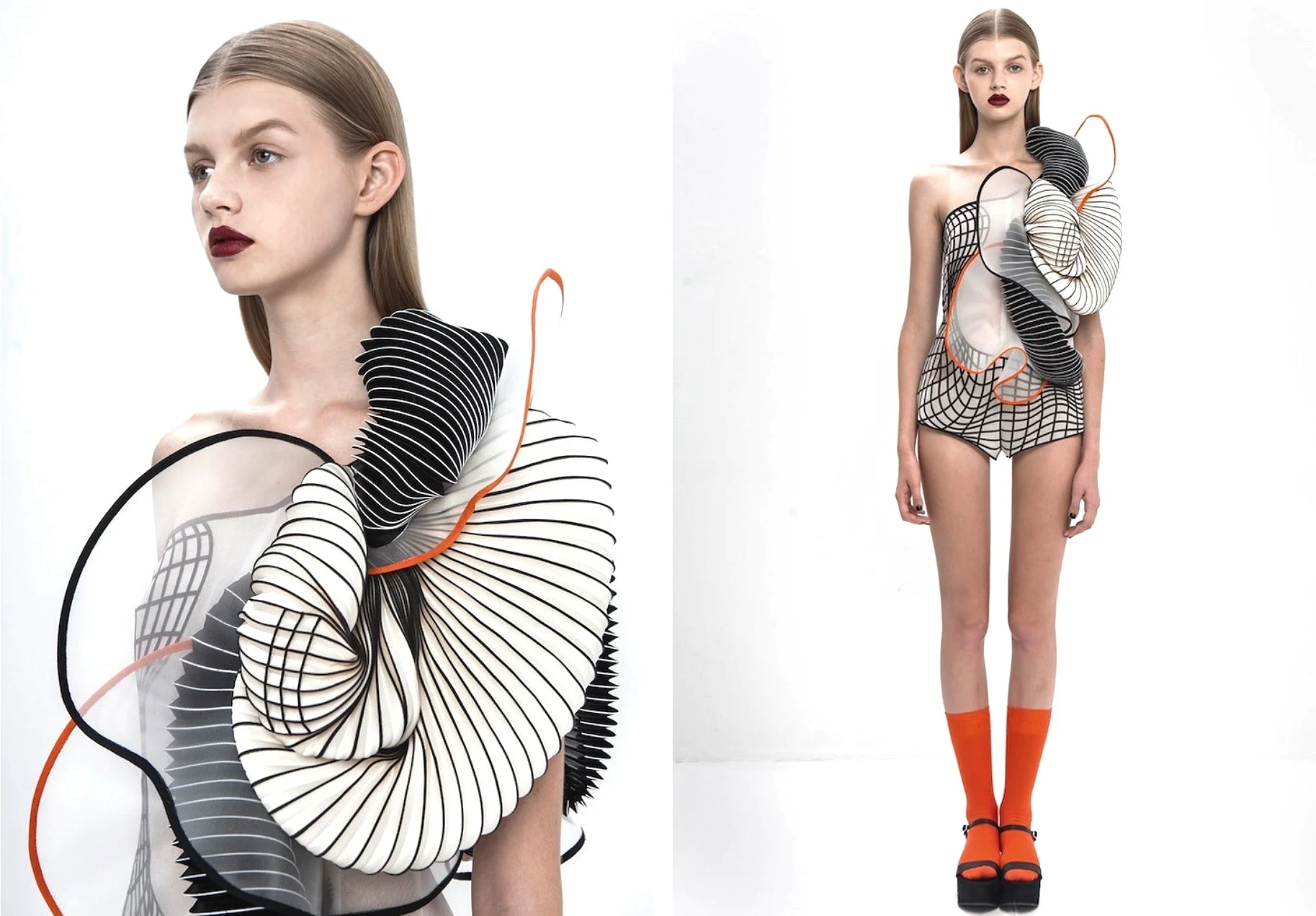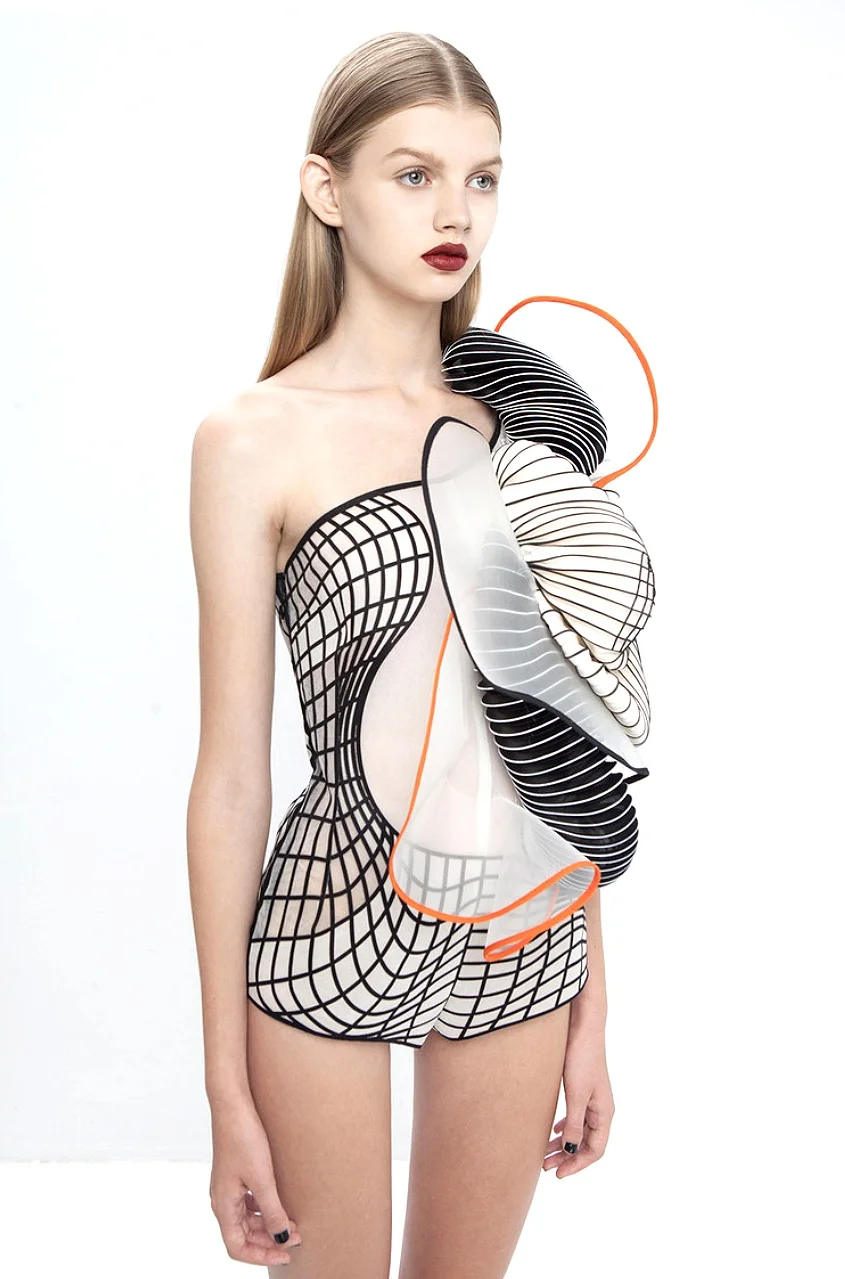tech-N-FASHION
FASHION IN 3D
Noa Raviv
The award winning designer
In collaboration with Stratasys, an international leader in 3D printing with research and development centers in Israel, Raviv manipulated digital images using the company’s computer modeling software. According to Raviv, “I have deliberately created defective digital images with 3D software. Deformed objects there were created by a command that the software was unable to execute. These objects cannot be printed or produced in reality. They only exist in virtual space.” Manipulating run-of-the-mill digital design tools like the grid, Raviv employs only three colors black, white and orange, as well as flowing tulle fabrics to express a journey into virtual space.
Noa Raviv
3D printing permits fashion designers to expand beyond the traditional boundaries of design, allowing them to turn some of the most challenging design concepts into reality. We are seeing an evolution from traditional textile production methods, such as pattern-cutting and sewing textiles together, towards a textile being totally 3-dimensionally grown.
THE PROCESS
Digitally-created materials are offering up vast possibilities in terms of enabling sophisticated physical properties to be embedded in specifically defined areas of a textile. For example, you can create a specific textile that is waterproof, opaque, flexible or rigid and then combine these elements together, meaning that these properties can all be present in a single garment.
Without the need for a specific mold, designers are free to create intricate geometries and structures, which are not only aesthetically pleasing, but can add smart functionality. For example, when we create a garment that needs to be held together, instead of using traditional buttons we can integrate this locking functionality directly into the textile itself, by making certain areas adhesive. We’re still in the early stages of developing our geometrical understanding and working out what is feasible, but the possibilities are vast.
The immense opportunities for customization that 3D printing offers is another important benefit for the industry. Apparels can now be created to perfectly fit the size and curvature of each part of the body, allowing for true personalization. This capability will also enable 3D printing to branch into other areas of fashion, such as leisure and sportswear, and potentially in cases of medical care. As this is a new domain, we still need to really challenge ourselves to envision the next steps and embrace this new design freedom in order to open up its true frontiers.
da Vinci Color - Full Color/Monochrome Desktop 3D Printer





